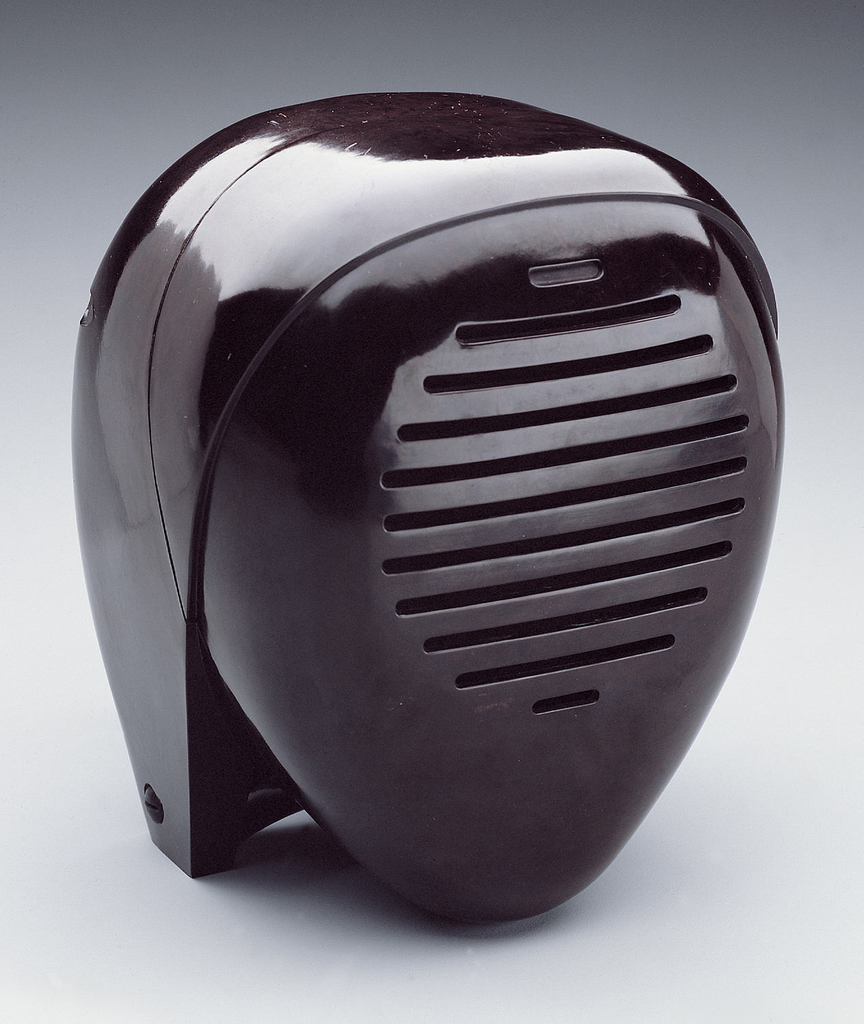A fascinating confluence of design, technology, utility, and social influences is embodied in the Radio Nurse, part of a wireless microphone and speaker system introduced in 1938 by the Zenith Radio Corporation, conceived as a baby monitor and aid for home or hospital. The system consisted of a sculptural transmitter called the Radio Nurse, designed by artist Isamu Noguchi, and a simple, functional box-like receiver called the Guardian Ear.
The idea for the product grew out of the need of E.F. McDonald, Jr., president of Zenith, to monitor the nursery of his infant daughter, born just a few years after the infamous Linbergh baby kidnapping. McDonald, a World War I Navy veteran trained in the new technologies of sound recording and radio, was skilled at finding practical domestic applications for such innovations. Drawing on Zenith’s advances in wireless radio transmitting and receiving, McDonald and the company’s engineers used his home as their laboratory to develop a new wireless intercom system. Adept at marketing, McDonald realized that such an intercom had great potential as a home product so he commissioned Japanese-American modernist sculptor Isamu Noguchi to create a stylish housing for the transmitter.
Noguchi designed the Radio Nurse as a simple ovoid shape with a speaker grill in front. The form resembled kendo masks that he would have seen during his childhood years in Japan; it also suggested the shape of a woman’s head framed by the scarf-like headdress worn by many nurses in the 1930s. The housing was made of the newly popular material Bakelite, a thermoset plastic invented by Dr. Leo Bakeland and introduced in 1909. Originally used in the electrical and automobile industries, Bakelite could be molded into any shape, resulting in a hard durable form that was nonconductive and heat resistant. Early Bakelite products were mostly dark in color with mixtures forming marbleized patterns. It used fillers such as sawdust, wood pulp, asbestos and dyes. The Radio Nurse is a classic Bakelite brown color, reminiscent of the tones of Japanese lacquer. The dark, slightly lustrous and softly curved form of the Nurse transmitter could pass as a fashionable accent in a contemporary living room, while the boxy Guardian Ear receiver could be placed discretely in the nursery or bedroom to be monitored.
The Radio Nurse intercom system debuted in March, 1938, at a time of concern about kidnapping, decreasing dependence on domestic help, and changing ideas about child rearing, that encouraged parents to leave babies unattended for periods of time. According to Zenith’s product brochure, “…Radio Nurse enables you to leave the nursery, yet guard your baby…. Be modern! Keep an “ear” on your children!” As aesthetically appealing as it was functional, in November, 1938, Radio Nurse won first place in the Household Product category of Modern Plastics Magazine’s Modern Plastics Competition, and was shown in the Whitney Museum of American Art’s annual sculpture exhibition in 1939.
Today is Mother’s Day

One thought on “A Modernist Mother’s Helper”
James DeLuca on November 9, 2022 at 12:20 am
Greetings:
Zenith’s 1938 “Radio Nurse” home intercom. I seem to be unable to find a manual for it. A service manual or even a user or owner’s guide would be appeciated.